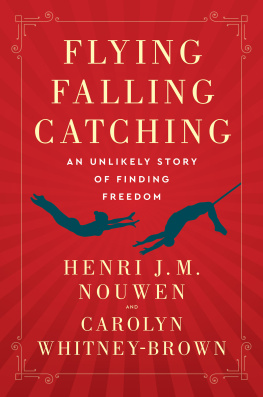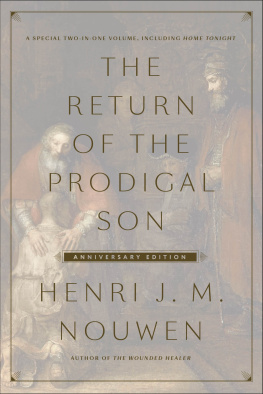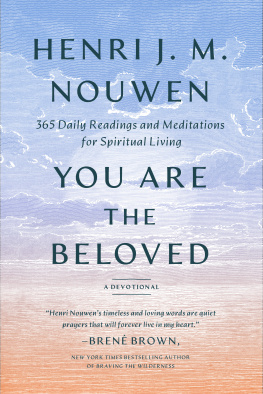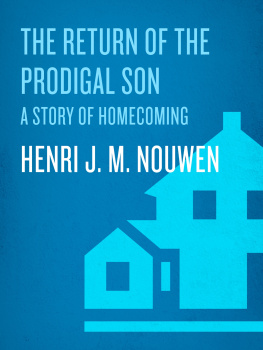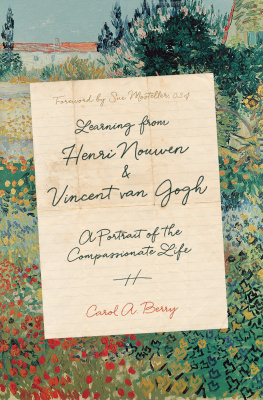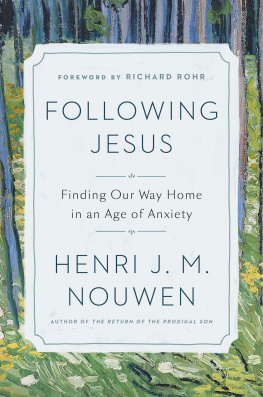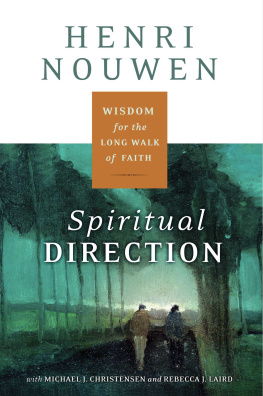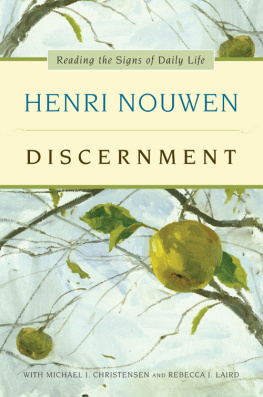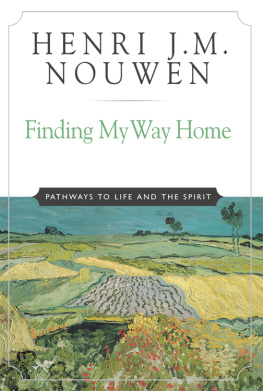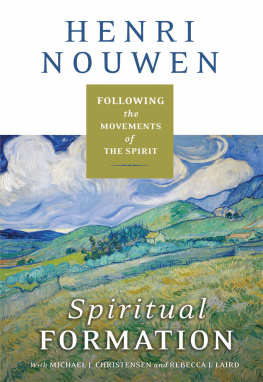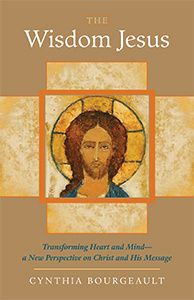Contents
Guide
To Geoffrey Whitney-Brown
because no one flies alone
For Sister Sue Mosteller, CSJ, beloved friend of Henri Nouwen,
a ground-breaking flyer in her own right
and the one who kept this story alive.
When I saw the Flying Rodleighs for the very first time, it looked like everything thats important in life. I saw it together in one act.
H ENRI N OUWEN
The ten minutes that followed somehow gave me a glimpse of a world that had eluded me so far, a world of discipline and freedom, diversity and harmony, risk and safety, individuality and community, and most of all flying and catching.
H ENRI N OUWEN
Contents
W hen they received the phone call telling them of Henris death, the five members of the Flying Rodleighs trapeze troupe were stunned. Before removing their flashy silver capes during their next performance, Rodleigh Stevens took a deep breath and offered a short speech dedicating the performance to the memory of their friend Henri Nouwen.
On the day of Henris funeral, Rodleigh with his wife and colleague Jennie Stevens drove 170 miles to St. Catherines Cathedral in Utrecht. They looked up into the stone Gothic arches and around the enormous space, amazed that it was so full.
We should have expected this, Rodleigh whispered to Jennie. They knew that Henri was famous, with millions of books in print, translated into dozens of languages. They knew that Henri was a Roman Catholic priest from the Netherlands who had been a professor at Yale and Harvard, then over the past decade had given up his academic career to live with people with intellectual disabilities in Canada.
They had known Henri well for more than five years, but they were shocked when one speaker described Henri as anguished and wounded. Rodleigh shifted uneasily and clutched the edge of the hard wooden pew to hold himself back from rushing to the front of the church to offer a corrective. His mind was full of images and memories of the very different Henri that he knew through visits, letters, and traveling together in Germany and the Netherlands with the Circus Barum.
P ERHAPS MANY OF H ENRIS friends, aware of his yearning and inner pain, and many who for years read his personally revealing books on the spiritual life, would have been equally surprised to discover that Henri believed his most important book was going to be a work of creative nonfiction about his experiences with the Flying Rodleighs, a book that his sudden death in September 1996 left unfinished.
* * *
T HE STORY YOU WILL read here is true. Every event actually happened, including Henris rescue out a hotel window. Texts in italics are Henris own words from his published or unpublished writings, talks or interviews.
Though Henri found acclaim and success writing books of spiritual wisdom, the Flying Rodleighs inspired him to imagine writing a different kind of book. When he died suddenly in 1996, he left hints of this new project: a transcript from his dictation immediately after meeting these trapeze artists for the first time in 1991, two chapters composed later, a journal written while traveling with the Flying Rodleighs, and other comments, reflections, notes, and journal entries.
In 2017, the publishing committee of the Henri Nouwen Legacy Trust approached me to do something creative with Henris unpublished trapeze writings. I was a writer who knew Henri well. After completing my PhD in English literature at Brown University and training as a spiritual director in the United Kingdom and Canada, I lived at LArche Daybreak with my husband and children from 1990 to 1997, where Henri was also a community member. Shortly after Henris death, I wrote an introduction to a new edition of his book The Road to Daybreak, as well as several other published pieces about him. Still, I was unsure about taking up Henris unfinished project. I remembered many conversations with Henri about writing and about the Flying Rodleighs, but the trapeze imagery had never grabbed my imagination. I dont like heights.
When I read Henris material, however, two questions intrigued me. First, why did the Flying Rodleighs performance and lives strike Henri so powerfully at that moment in his life? Second, why didnt he write more than some fragments of a trapeze book? He wrote a lot of books between 1991 and 1996, and he talked continually about his desire to write this one. What happened?
I realized that my project was not to write the book that Henri would have written, but to tell the story of Henri and the Flying Rodleighs.
Combing through Henris trapeze notes and drafts as well as Henris other published and unpublished writing, I began to sense an overarching shape in his lifes last few years. Four kinds of experiences stood out: Henris reflections on artistry and beauty; times when his physical response helped him to articulate how the body tells a spiritual story; transformative points of immersion in specific communities; and moments of lightness, humor, relaxation, and delight.
Ideas for how I might bring Henris experiences to the page began to form, but it took reading Rodleigh Stevenss memoir of his friendship with Henri, titled What a Friend We Had in Henri, to give me details for a book that would read as engagingly as fiction while using true events. Rodleighs memoir also helped clarify something that had been niggling at me: while Henri was often anguished and demanding, he was also delightful. Reading Rodleighs account, at points I laughed out loud remembering our eager, awkward, insightful friend. There is a reason his friends still miss him all these years later.
Henri had envisioned writing this story as a work of creative nonfiction. All of Henris writing is creative, of course. His artistry is apparent even in his published journals, as Henri crafted himself into a character in his own narrative, selecting the details that he wished to share.
Even allowing for Henris desire to tell a creative story, I needed to understand what actually happened the day of Henris first heart attack. How is a patient in the midst of a medical emergency taken out a window? Dennie Wulterkens, a specialist who trained nurses to do this kind of rescue in the 1990s, responded to my email and explained the process in detail. Because we have been unable to identify the historic person who responded to the call, I have named the character of the nurse Dennie in thanks. Even in a medical crisis, Henri would have tried to learn the name of the person caring for him.
Except for Dennie, all characters are real people, with their own names. My main artistic license is to imagine that during his heart attack in the Netherlands on September 16, 1996, Henri reflects back over parts of his life. This is not a biography. Many important people and experiences in Henris life are not included.
Because I want you to hear Henris voice as directly as possible, his writings are italicized and never rewritten. Occasionally I abbreviated or factually corrected them. Sources are provided in detailed notes at the end of the book.
I wasnt thinking of using the Rodleighs as illustrations for great spiritual truths, but was simply trying to write a good story, Henri once told his German editor. I believe this is, as Henri hoped, a very good story. Along the way, you may also catch some unexpected insights. I know I did.
But first, jump in and enjoy the story!
Carolyn Whitney-Brown
Cowichan Bay, BC, Canada
September 16, 2021
T wo paramedics in crisp white uniforms burst into Henris hotel room. They are speaking rapidly in Dutch, his mother tongue. Henri, lying on the hotel bed still in his travel clothes, is relieved to see them.

